“Sólfar” (“Sun Voyager”) created by Jón Gunnar Árnason
Traveling from Europe to the US has always been a long flight with no stops in between. However, Iceland is now offering an interesting twist to traveling and allows stopovers. We opted to tag a one-night stopover on our flight returning from London allowing us to break up the journey and see what all the hype has been about Iceland. Adding a stopover was the least expensive flight option we found traveling from Europe during one of the most expensive months (August) for travel. We decided to give it a test.
Iceland was hit hard with the usual problem of over-extended banks. The currency crashed, unemployment soared, and the stock market was more or less wiped out. With a population of 350,000 inhabitants, this volcanic island sits midway between Europe and North America. Tourism has allowed Iceland to recover from the consequences of their financial crisis. There was a specific push to promote Iceland as a way to make the trans-Atlantic crossing a bit more interesting. Tourism has steadily risen by about 25% a year since 2010, hitting 2.2 million in 2017. It now has become a destination with cheap flights both from North America and Europe. We did notice that there were a significant number of immigrant workers in Reykjavik. The economic growth is obviously attracting foreigners.
Click photo to open gallery
Allow yourself plenty of time for travel to and from the airport. Keflavik International Airport is not close to the Icelandic capital. The information detailing the bus ride from the airport outlines that you should allow 55 minutes for the ride into the city. However, it actually took us about 90 minutes with a bus change at the bus terminal before you are dropped near to your hotel. Buses are always available as they sync departure times with flight arrivals. The bus ride from the Keflavik Airport costs almost $75 USD for two. Prices depend on whether you get off at the bus terminal or change buses to get to your hotel. Taxis jump up quickly from there. If you are lucky to find two people to share the cab fare this will help cover the costs. The airport is showing strains of this significant increase in traffic. We were advised to leave 4 hours before the flight due to possible crowds at the airport.
We made a mistake in staying for just one night, mainly due to time constraints between house sits. The travel to and from the airport took much longer than planned. We enjoyed walking around Reykjavik but did not have the time to venture further afield. An extra night or two would have allowed us to do some interesting tours. The landscape in Iceland is weather-beaten, remote and full of stunning waterfalls, glaciers and geysers.
Since traveling around Iceland requires some form of transportation a car rental should be considered if you are staying several days. This could be relatively inexpensive when you factor in the expenses of getting to and from the airport. Although there are plenty of organized tours, a car provides more flexibility. Fuel at the time of this post was around $8.00 a gallon. If you are more adventuresome there are numerous places renting camper vans of various sizes and all include different levels of provisioning packages. Think of it as, Airbnb on wheels.
A few things you should know, Iceland is not for the budget traveler. Whatever the reasons are for the high prices – more demand, more tourists, island country, everything is imported.
Food is expensive here and you should plan for this extreme. Most items come by container ship Plan on eating lamb, reindeer or fish. Lamb and fish are the local fare and beef is imported. Unfortunately whale meat can appear on the menus as well. Alcohol in general is expensive. Alcohol is sold in bars, restaurants, and cafes, but never in supermarkets because, believe it or not, this country once had total prohibition on alcohol right up till 1989.
One thing we noticed is that almost every Icelander returning stops at the duty free and shops a bit before leaving the airport. The reason is simple, alcohol there is almost half the price as in the rest of the country, and in some cases even more.
Here in Iceland your credit card will be your friend. Everyone pays by credit card for even the smallest purchase. We did not change any money and paid by credit card everywhere. However, if you intend to travel around the country, some local Króna will probably be necessary. US dollars and Euros are not usually accepted.
Everyone in Iceland speaks English. No need to suddenly take a crash course and learn Icelandic. Icelandic is similar to Old Norse, a medieval language. It is an insular language and has not been greatly influenced by other languages and therefore has not changed much since the 9th and 10th centuries. The countries aim is to keep the language both true to its ancient roots, and useful for modern conversation.
Many new words and phrases have been developed since medieval times and Icelanders have been faced with two options – adopt foreign words such as the English and French have done or develop their own. They have chosen to get creative and create new expressions or revive old words that can be modernized. For example, the word computer absolutely did not exist in medieval times, so a new term had to be created – tölva. The new word is a hybrid of tala (number) and völva (a witch or female fortune teller). So, the literal definition of a computer in Icelandic is with a number witch.
When the volcano Eyjafjallajökull erupted in 2010 it caused major international air traffic problems. Icelanders thought it was hilarious that despite their best attempts reporters all over the world butchered the name of the volcano. You can find lots of trinkets selling in touristy type shops trying to make a Króna off of the name.
You will quickly learn that when you turn on the hot water faucet in Iceland it smells like sulphur or rotten eggs. It does not linger on your body, so get used to it. The water smells because it is coming either directly from geothermal boreholes in the ground or via geothermal energy plants. Signs were posted in our hotel warning us of the smell. However, the cold water comes from a different source, the cold springs. It is claimed to be some of the cleanest to drink in the world, no need for bottled water.
As a frequent traveler, you become accustomed and occasionally offended when seeing familiar brands in far away places. Iceland has none of them. No McDonalds, 7-11s or Starbucks can be found. This nation is so homegrown you would be hard pressed to find anything mainstream here. But, like all of Europe, there always seems to be an Ikea that has popped up on the side of the road somewhere and Iceland has one as well.
One of the highlights for many people visiting Iceland is a trip to the geothermal pool the Blue Lagoon. If crowds are not your thing there are also quieter and less expensive nature places outside of Reykjavik. A plunge in the pool will set you back upwards of 54€ – $60 USD per person. Transportation is extra and add this to the adventure and it will put you over $100 per person when done. We haven’t heard of anyone who’s gone there complain about the actual experience of the lagoon, although it can get very crowded. We met two guys on our bus ride back to the airport and they said it was worth doing it – once. They said it was fun to float around for a while, cover themselves in mud clay and sit in the steam bath holding a cocktail. We are all faced with the challenge of how to spend our travel dollars. We considered it, but our minds were changed when we saw the price and realized the time restraints that we had.
In conclusion, we think the next time we pass through Iceland we will stay over for a few days to truly appreciate the natural beauty of this country. The views from Reykjavik of the mountains in the distance were very enticing.
Icelanders are obsessed with their sculptures. Two of the many that we passed while walking the city are below.
Magnús Tómasson created “Óþekkti Embættismaðurinn” (“The Unknown Bureaucrat”) from 1973.
“The Unknown Bureaucrat” shows a businessman carrying a briefcase whose torso is embedded in a rock. It was placed in a small backyard in downtown Reykjavík with the intention to emphasize the role of bureaucrats in this world.
“Horft til hafs” (“Looking Seawards”) by Ingi Þ. Gíslason (1905-1956). The sculpture portrays two fishermen standing next to each other.
One of them is pointing at something out at sea and the other is following his gaze, shielding his eyes with his hand against the sun.
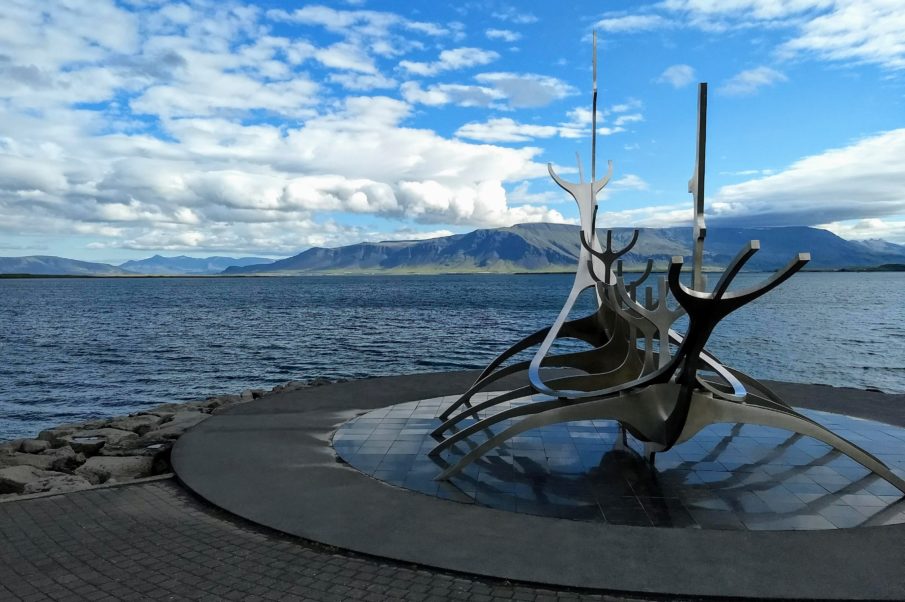
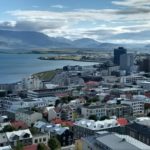
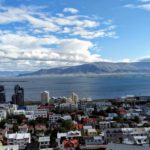
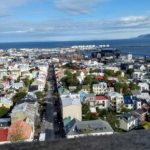
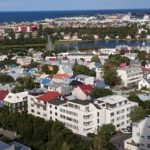
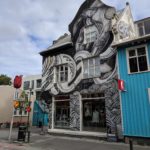
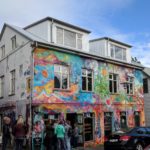
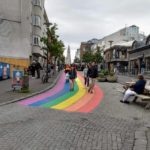

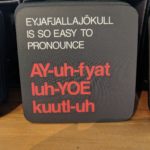

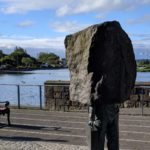
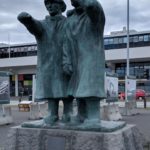
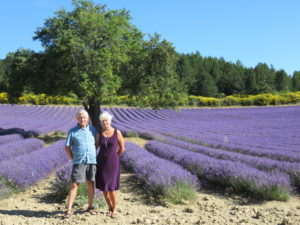
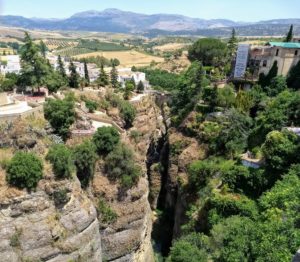
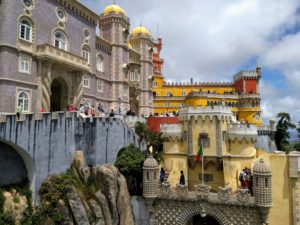
Comments
Great read – thanks again for taking the time to share these experiences.
I went on a day trip to Iceland back in the ’90s and it must have been after prohibition because I remember I was able to get an astonishingly expensive beer in Reykjavik. Looking forward to seeing you both soon.
Andrew